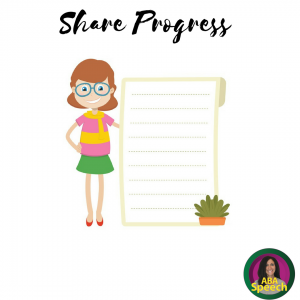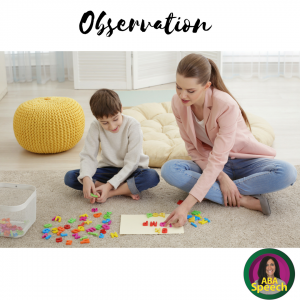Many students with autism work with a team of professionals on a regular basis. Those teams might include a speech-language pathologist, physical therapist, occupational therapist, intervention specialist, job coach, parent and behavior analyst. SLPs and behavior analysts share several areas of expertise, so they might find handling this overlap to be a challenge! When SLPs and BCBAs are able to unite efforts and provide collaborative services, our students can make such wonderful progress!! There are many barriers to collaboration but I have outlined some strategies to help you get started in the process.
1. Take time to introduce yourself and talk with one another. This one may seem basic – but we are all so busy these days! If you are the behavior analyst you may be working as a consultant in a school district. It can be hard to come in and be the new person. Often times a consultant may only be called in when things are not going so well. This brings with it a whole other dynamic and plethora of emotions!!
2. Share current progress regarding communication goals. It is good for the treating speech language pathologist to share what is currently going on in therapy. Even if a BCBA may be reading over the student’s current progress reports, it is a good idea to convey this face to face when possible. This is a good time to have a dialogue about what is going well and areas that may be a challenge.
3. If a behavior plan is put into place that is new. Make sure that the entire team understands, is trained on and feels comfortable with the suggested strategies. Sometimes new plans can seem overwhelming, it is a process to make sure that it is implemented with fidelity. If you have a question about the plan – ask!
4. If time allows, watch each other work with the student! We each have our individual areas of expertise and it is a great time to collaborate and learn from each other. I rarely get to see anyone else doing therapy – so I always welcome this opportunity to learn and share.
5. Share any approaches you think will work better for the student. Collect research and daily data to support your idea. This information will set the foundation for a professional discussion about the best way to target goals for your student. Sometimes it’s fine to agree to disagree. Just discuss progress frequently.
I know that collaboration is not as easy as the above steps but these can help you get started in the right direction! I am both a speech language pathologist and a board certified behavior analyst. I specialize in helping both professions work together side by side. When we are able to provide collaborative services- the sky is the limit for our clients!
If you want to learn more about my services to help with collaboration, please feel free to contact me through my website or at rose@abaspeech.org.




0 Comments